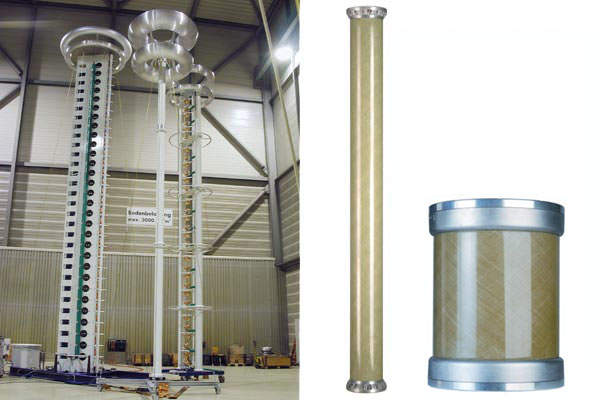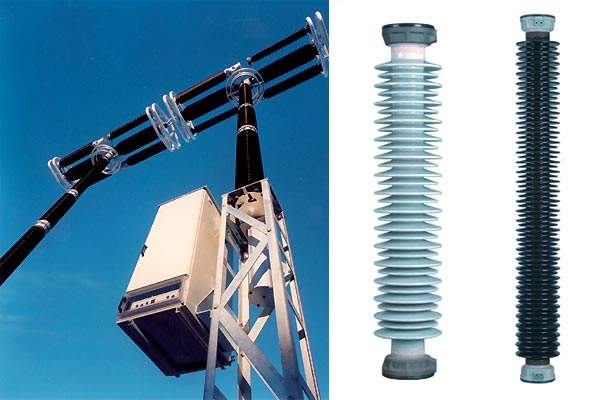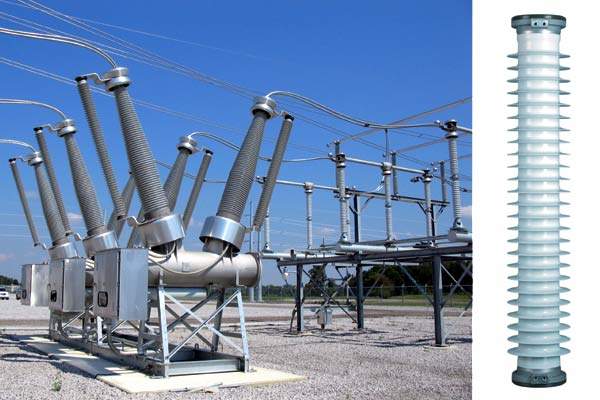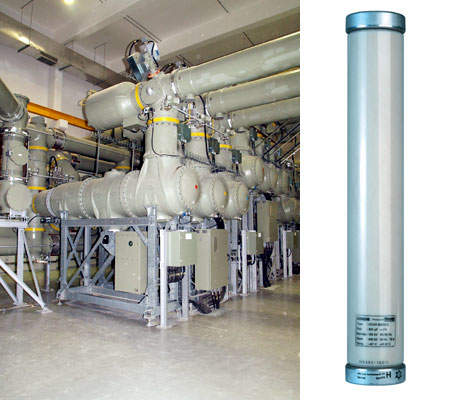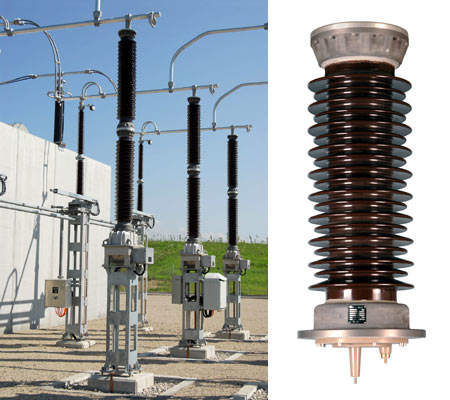Maxwell Technologies is recognized as the global leader in high-voltage capacitor technology, due to first-in-class, high quality, long-lasting and reliable products with excellent electrical and mechanical strength, and the company’s ability to respond to individual customer requirements.
Additional strengths are intensive R&D activities to maintain its market position as well as its leading role in setting high-voltage capacitor standards.
High-voltage grading capacitors or coupling capacitors
Maxwell’s CONDIS® high-voltage capacitors are mainly used as grading capacitors or coupling capacitors in circuit breakers of transmission and distribution substations as well as generator breakers of power plants.
High-voltage grading capacitors may be used either for live tank breakers where the breakers are installed outdoor and thus the insulation is done by air (AIS), or for dead tank breakers and GIS circuit breakers where the capacitors are installed in the gas-insulated breaking chamber.
Our high-voltage coupling capacitors may be used for dead tank breakers where the capacitors are installed outdoor parallel to the bushings. Furthermore, capacitive voltage dividers (CVD) for capacitive voltage transformers (CVT) and specialty capacitors mainly for laboratory use are also available.
CONDIS high-voltage capacitors are available in porcelain, composite insulator and/or epoxy-resin (GFK) insulators.
Grading capacitors for live-tank breakers
Grading capacitors used in live-tank circuit breakers allow the high voltage to be distributed uniformly in the interrupting chambers. For voltages of 550kV and above, two chamber breaker designs are typically used. The capacitors are installed in parallel to the breaking chambers.
In addition to the voltage-distribution function, grading capacitors allow you to reduce the voltage increase during the breaker opening. Furthermore, they also protect the breaker from a re-ignition during opening.
Coupling capacitors for dead-tank breakers
Coupling capacitors are used on dead-tank breakers, generators or any other HV equipment to limit the over-voltage coming from a short-distance fault on a low capacitive line. Estimates indicate that approximately 60% of the electric utility grid above 245kV employs circuit breakers rated at 40kA as interrupting short-circuit current, with most of the balance rated at 63kA.
Upgrading from 40kA to 63kA is accomplished by adding a single coupling capacitor, and provides increased protection for the circuits. Systems rated up to 80kA have also been made available in the last few years for areas with very high power-generation capability.
GIS capacitors for gas-insulated circuit breakers
GIS capacitors are dedicated to various types of gas-insulated switchgears, and the design is therefore customer-specific. Components for GIS circuit breakers need to withstand tough environments with extreme temperature variations, dust and pollution, and also fulfill confined-space requirements.
GIS capacitors with nominal voltages up to 500kV and capacitances above 200pF are available. Standard capacitor flange diameters are 100mm, 120mm, 140mm and 174mm.
Capacitive voltage dividers (CVD)
CVD are components used for capacitive voltage transformers (CVT) that measure the voltage and/or the power on a high-voltage overhead power line.
High-voltage laboratory capacitors
CONDIS high-voltage laboratory capacitors can be used in laboratories as:
- Coupling capacitors for PD measurements
- HV dividers for 50Hz voltage measurements
- HV RC dividers for impulse-voltage measurements
- Capacitive loads for series-resonance installations
- Capacitive loads for DC installations
In addition, CONDIS high-voltage capacitors are used as coupling capacitors for on-site PD measurement and coupling capacitors for generator circuit breakers.
Aluminium foil capacitors — CONDIS technology
Maxwell applies CONDOR (CDOR), the company’s latest technological development, using aluminium foil capacitors with polypropylene paper mixed dielectric, impregnated with synthetic oil. Within the high-voltage capacitors over 100 flat windings are connected in series.
The key element of Maxwell’s proprietary CDOR technology is the automated stacking and series connection of the flat windings through welded connections between the individual windings. This allows the suppression of aluminium connections and manual soldering external to the windings.
CDOR technology offers the following advantages:
- Lower weight
- Shorter lead-time
- Higher quality and reliability
- Less variation of electrical performance
- High temperature stability
- Small size of active parts resulting in lower capacitor cost
- Superior integration into the designs of the customer


